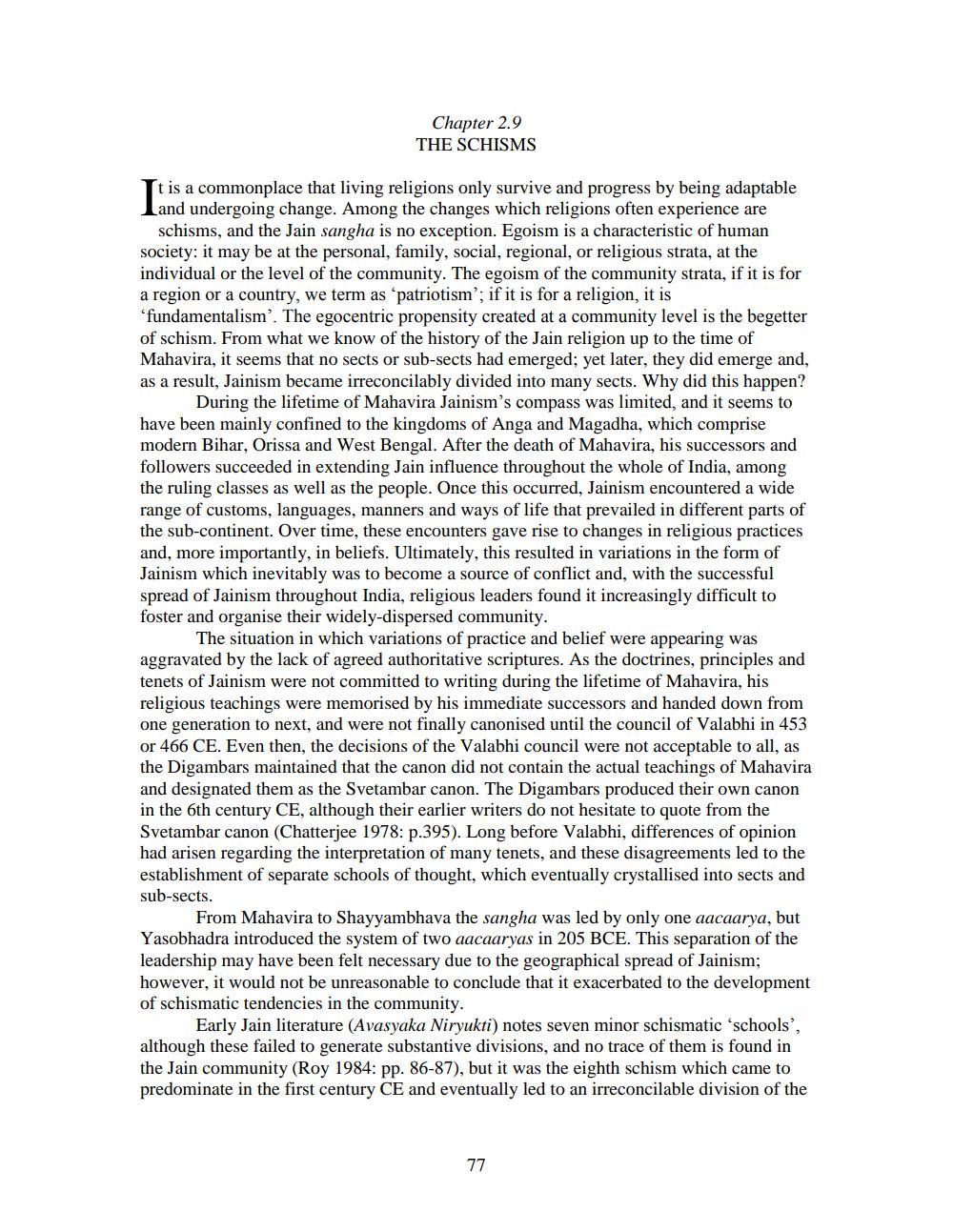________________
Chapter 2.9 THE SCHISMS
t is a commonplace that living religions only survive and progress by being adaptable
Land which religions
schisms, and the Jain sangha is no exception. Egoism is a characteristic of human society: it may be at the personal, family, social, regional, or religious strata, at the individual or the level of the community. The egoism of the community strata, if it is for a region or a country, we term as 'patriotism'; if it is for a religion, it is 'fundamentalism'. The egocentric propensity created at a community level is the begetter of schism. From what we know of the history of the Jain religion up to the time of Mahavira, it seems that no sects or sub-sects had emerged; yet later, they did emerge and, as a result, Jainism became irreconcilably divided into many sects. Why did this happen? During the lifetime of Mahavira Jainism's compass was limited, and it seems to have been mainly confined to the kingdoms of Anga and Magadha, which comprise modern Bihar, Orissa and West Bengal. After the death of Mahavira, his successors and followers succeeded in extending Jain influence throughout the whole of India, among the ruling classes as well as the people. Once this occurred, Jainism encountered a wide range of customs, languages, manners and ways of life that prevailed in different parts of the sub-continent. Over time, these encounters gave rise to changes in religious practices and, more importantly, in beliefs. Ultimately, this resulted in variations in the form of Jainism which inevitably was to become a source of conflict and, with the successful spread of Jainism throughout India, religious leaders found it increasingly difficult to foster and organise their widely-dispersed community.
The situation in which variations of practice and belief were appearing was aggravated by the lack of agreed authoritative scriptures. As the doctrines, principles and tenets of Jainism were not committed to writing during the lifetime of Mahavira, his religious teachings were memorised by his immediate successors and handed down from one generation to next, and were not finally canonised until the council of Valabhi in 453 or 466 CE. Even then, the decisions of the Valabhi council were not acceptable to all, as the Digambars maintained that the canon did not contain the actual teachings of Mahavira and designated them as the Svetambar canon. The Digambars produced their own canon in the 6th century CE, although their earlier writers do not hesitate to quote from the Svetambar canon (Chatterjee 1978: p.395). Long before Valabhi, differences of opinion had arisen regarding the interpretation of many tenets, and these disagreements led to the establishment of separate schools of thought, which eventually crystallised into sects and sub-sects.
From Mahavira to Shayyambhava the sangha was led by only one aacaarya, but Yasobhadra introduced the system of two aacaaryas in 205 BCE. This separation of the leadership may have been felt necessary due to the geographical spread of Jainism; however, it would not be unreasonable to conclude that it exacerbated to the development of schismatic tendencies in the community.
Early Jain literature (Avasyaka Niryukti) notes seven minor schismatic 'schools', although these failed to generate substantive divisions, and no trace of them is found in the Jain community (Roy 1984: pp. 86-87), but it was the eighth schism which came to predominate in the first century CE and eventually led to an irreconcilable division of the
77




